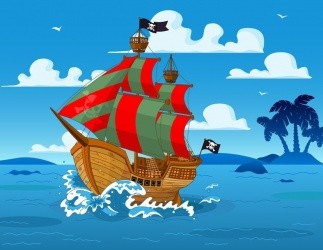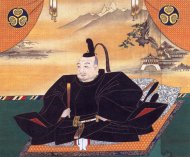Pirates, Samurai and Robots, Pt. 1
From six weeks to several months on-board an overcrowded wooden ship, how is it that governance managed to be successful - and what can MBA Japan students learn? In the Golden Age of Pirates, "human resource" management was built around three key points -
1) Assembly
2) Delegation
3) Action
Pirate crews were large and racially diverse. It is said that Captain Blackbeard's ship 'Queen Anne's Revenge' held a crew of over 300 and the breakdown of diversity on a typical ship was 35% British, 25% US, 20% West Indies and 20% mixed European. Diversity was nothing new in this age. Assembling a well-diversified crew (staffing) of similar ideology (culture) rather than similarity based on other factors keeps things in check and balanced - for the most part.
Quartermasters - specialized roles were recognized and respected if not for fear of torture or worse and often rewards or punishments were given as food rations and supplies. Promotion was awarded on merit, or survival, of the smartest or strongest. Smart delegation and distribution of limited resources for maximum gain in uncertain and unpredictable environments is essential. Just as important, the 'equal' or 'perceived fair' distribution (compensation) of treasure and profits.
The decision-making and action of the Captain set the goals (objectives) and resulted in how behaviors were defined and meaningful work was created for the crew. Whether they be cooks, deck-sweepers, anchor-haulers or anything else, the Captain was at the apex of a top-down, pyramidal hierarchy of 'human resource' management. By the reputation of a Captain's actions, retaining, recruiting and assembling the next crew for the next ship was the basis of operations.
Although the style is outdated, we track how assembly, delegation and action drove 'human resource' management in organizations. What aspects still matter today?
In the next post, how was 'human resource' management different in the Samurai Age and how will it evolve to 'human development' by the 2000s?

 Brochure
Brochure
 Info Session
Info Session
 Application
Application
 Alumni Voices
Alumni Voices





